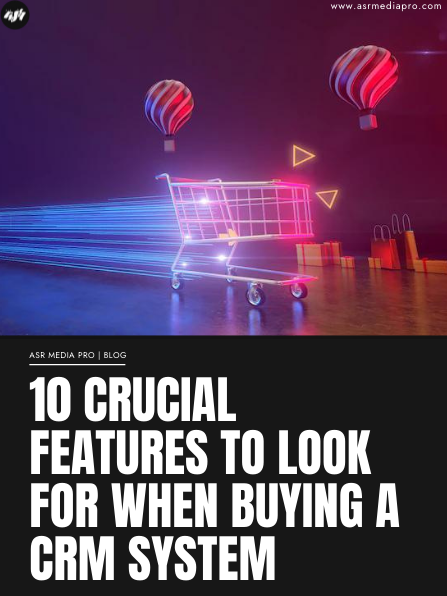
10 Crucial Features to Look for When Buying a CRM System
10 Crucial Features to Look for When Buying a CRM System As you might expect, leading CRM solutions provide a vast array of features, from
The e-commerce industry forever altered the way Indians shopped. People in non-urban areas did not have access to the majority of the things available in cities a decade ago.
E-commerce has provided a plethora of opportunities for small businesses in addition to benefiting customers.
Flipkart — Flipkart raised $3.6 billion at a $37.6 billion post-money valuation. The Indian e-commerce behemoth is largely expected to go public in the first half of next year.
In 2007, the company was established.
Sachin and Binny Bansal founded the company.
Bangalore, Karnataka, India is the company’s headquarters.
The book ‘Leaving Microsoft to Change the World’ was the first item sold to a customer from Hyderabad. Flipkart today has around 40,000 employees. The site accepts cash on delivery, credit or debit card transactions, net banking, e-gift vouchers, and card swipe as payment methods.
Amazon India – $70.7 billion in revenue
Incorporated in the year 2013
Jeff Bezos founded the company.
Seattle, Washington, USA is the company’s headquarters.
To overcome the constraints of running an e-commerce business in India, Amazon has rebuilt its ecosystem from product to delivery. Amazon paid roughly Rs. 107.6 crore (US$ 14.5 million) for Bengaluru-based retail tech start-up Perpule in March 2021.
SnapDeal — According to sources, Snapdeal is planning an initial public offering (IPO) to generate $350-400 million at a valuation of $2-2.5 billion.
The year the company was founded was 2010.
Kunal Bahl founded the company.
New Delhi, India is the headquarters.
Snapdeal began as a daily deal platform on February 4, 2010, but in September 2011, it evolved to become an online marketplace. Snapdeal shifted their business approach in the middle of 2021, focusing on “bargain shoppers.” The corporation made the decision to stop selling high-end brands.
Paytm– Paytm has risen to become one of the country’s most valuable startups, with a market capitalization of US$ 16 billion.
The year the company was founded was 2010.
Vijay Shekhar Sharma founded the company.
Noida, Uttar Pradesh, India is the company’s headquarters.
One97 Communications owns Paytm, which was founded in 2010. In India, the company began by providing cellphone recharge before expanding to include bill payment and e-commerce.
In 2015, it gained the ability to schedule bus travel. Paytm also started selling movie tickets in 2016 after partnering with Cinépolis.
Paytm was granted a licence by the Reserve Bank of India in 2015 to establish one of India’s first payments banks. Paytm has been steadily developing and diversifying its portfolio.
Myntra – In FY20, the company generated revenues of INR 4,262 crores.
In 2007, the company was established.
Mukesh Bansal, Mukesh Bansal, Mukesh Bansal, Mukesh Bansal Vineet Saxena (Vineet Saxena) Lawania, Ashutosh
Bangalore is the company’s headquarters.
Myntra, the country’s most popular fashion e-commerce platform, has a promising future ahead of it. It was first purchased by Flipkart in 2014. It progressed from a B2B platform to the ultimate fashion destination it is today.
It acquired its nearest competitor, Jabong, in 2016. Myntra, like other e-commerce sites, has built its brand through digital marketing. In 2019, an app-based talent show called “Myntra Fashion Superstar” was started.
Nykaa – As of 2020, the unicorn startup was valued at INR 85 billion.
In 2012, the company was established.
Founder: Falguni Nayar
Mumbai is the company’s headquarters.
Nykaa is the country’s largest beauty and wellness e-commerce platform. It was the country’s first of its sort, and it’s credited with bringing major worldwide beauty companies to the country. With approximately 2000 people, the company has grown quickly and expanded its fashion offers.
Despite some controversy about bogus products on the website, Nykaa remains a hugely popular platform.
In a post-pandemic society, people prefer to shop online.
The pandemic of 2020 was both a blessing and a curse for e-commerce. The pandemic has improved internet buying habits after some initial obstacles. People who formerly preferred to shop in physical stores have shifted their preferences to internet purchasing.
This is mostly due to COVID-related safety concerns. Even the government has been encouraging people to shop online instead of going to stores. For example, just after the lockout, Flipkart experienced a nearly 50 percent increase in new users.
During the ‘Unlock 2020’ campaign, tier three and beyond had the most growth, with a 65 percent increase.
Several traditional brick-and-mortar stores have gone online-only.
Several firms were forced to close their physical storefronts and only have an online presence due to multiple lockdowns. Even stores without an e-commerce option started to jump on board quickly.
This came about as a result of brands realising that the epidemic is here to stay for a long time and would have an impact on consumer behaviour. Muji and Forever 21 are two of the stores in India that have switched to an online-only presence.
Product distribution by drone (Drone Delivery)
While drone delivery has been widely discussed in India for some time, it has yet to gain traction. Swiggy, on the other hand, was one of the first companies to receive approval for drone food delivery in 2021.
It remains to be seen whether drone deliveries would run well in India. This, on the other hand, will inspire more e-commerce businesses to give it a shot.
E-commerce behemoths are expanding their product lines.
Flipkart and Amazon have just started selling groceries, putting firms like Big Basket and Grofers under pressure. Diversification has become a prevalent tendency among major e-commerce platforms.
Personal products and home decor are now available from fashion brands such as Myntra and Ajio. This would have been unthinkable just a few years ago, but it’s now a popular trend.
E-commerce platforms will benefit from government measures that boost their potential.
The DPIIT (Department of Industry Promotion and Internal Trade) has developed an onboarding process for e-commerce platform sellers. The goal is to provide improved cataloguing, vendor finding, and other procedures.
The government is utilising the Open Network for Digital Commerce (ONDC) to ensure that all players have equitable access. Better methods will benefit not just the suppliers, but also the purchasers.
The evolution of small businesses
Surprisingly, small retailers were responsible for one of the most dramatic shifts in India’s e-commerce scene. Buyers in India have long preferred “kirana,” or mom and pop shops. Especially in tier two and beyond cities.
As a result of the epidemic, numerous of these tiny businesses were compelled to turn to e-commerce. Some firms considered developing simple websites or launching WhatsApp businesses. Many of them joined platforms like Dunzo in the larger cities.
By CY2030, the digital evolution of smaller stores is predicted to reach $1.5 trillion.
Lockdowns triggered by a pandemic
The largest obstacle for India’s e-commerce industry was the imposed lockdowns to contain the pandemic. With continually changing restrictions, supply chains were disrupted, and delivery became a challenge.
As a result, some small enterprises were forced to close their doors. Several small businesses are struggling to stay afloat, despite the fact that companies are learning to live with the new normal.
Issues with payment security
Paytm, one of India’s largest payment platforms, was hacked in 2020. As a result, a number of users have checked out of the app and have ceased using it. This caused a problem for a number of e-commerce companies that used the gateway.
Even larger payment gateways, such as Google Pay, are abused by both businesses and consumers. As a result, there is still a widespread belief in India that digital payments are unsafe. Many customers still prefer cash on delivery, which is not an option available to all e-commerce companies.
Both vendors and customers have inadequate legal support.
The development of e-commerce in India has brought with it a slew of issues for both sellers and shoppers. Fake orders, product non-delivery, product misrepresentation, and cyber-crime are only a few instances.
Legal assistance is still prohibitively expensive for the average Indian buyer and business. As a result, in the event of such an issue, there isn’t much support to get it fixed.
Concerns about the privacy of information acquired on an e-commerce website
To gather information, most e-commerce websites use cookies. Many users are concerned about the information gathered.
As a result, many online consumers opt to log out of their accounts or shop anonymously. As a result, the e-commerce vendor has fewer insights.
Cookies are prohibited.
E-commerce confronts a problem as Apple and Google Chrome attempt to curb cookie gathering. Retargeting is one of the most important marketing strategies used by e-commerce businesses.
With these additional restrictions, retargeting will be more difficult, and in certain circumstances, impossible. E-commerce businesses will have to come up with innovative, non-intrusive strategies to increase purchases.
Supporting different languages has its drawbacks.
With the growth of e-commerce in non-urban areas, firms will need to consider linguistic obstacles. The majority of non-urban clients do not speak English as their first language.
This is a problem in a country like India, where there are different languages. It is not impossible to provide translation and multilingual options on an e-commerce platform.
However, it is prohibitively pricey for the average business owner.
The Indian e-commerce business is rising, and by 2034, it is predicted to surpass the United States as the world’s second-largest e-commerce market.
A few elements that will continue to shape this market are as follows:
Non-urban areas are seeing an increase in e-commerce.
According to projections, India’s social commerce gross merchandise value (GMV) in 2020 will be US$ 2 billion. Due to increased mobile usage, it is estimated to reach US$ 20 billion by 2025.
This rise in internet penetration is boosting e-commerce outside of tier-one cities. E-commerce behemoths are also aware of this enormous market and are marketing to it.
The new normal is that people prefer to shop online.
While the epidemic caused many problems for e-commerce at first, it has since given it a substantial boost. There has been a significant shift in thinking as a result of increased reservations about visiting physical establishments.
Consumers are increasingly seeing e-commerce as not just convenient but also extremely safe. Even those who previously preferred in-person shopping have changed their minds.
Regulations have resulted in improved protocols.
India’s e-commerce business is now governed by several ministries. The government has tightened e-commerce regulations in recent years. The entire e-commerce ecosystem is projected to be streamlined as a result of these processes.
This shortened procedure ensures that all businesses have equal access to resources.
There is a pressing need to combat cyber-financial crime.
Unfortunately, as the Indian e-commerce business expands, so does cybercrime, particularly in the area of financial transactions. If a consumer or firm loses money, there is currently very little that can be done.
There is an immediate need to address this issue by enacting stricter restrictions and providing better security alternatives.
MSMEs get a boost
Micro, small, and medium businesses have benefited greatly from India’s e-commerce market (MSME). By providing them with a platform, they will be able to enter new markets.
They also don’t have to invest in their own advertising, logistics, or other overheads.

10 Crucial Features to Look for When Buying a CRM System As you might expect, leading CRM solutions provide a vast array of features, from

7 Ways Telephony and CRM Tools Can Help Your Business Technology has altered how we conduct business. Indeed, technological advancements have improved how companies conduct

This Pixel 4 Can Recognize Life-Changing Diseases Developers from all over the world are attempting to simplify our lives by incorporating numerous new and cutting-edge
